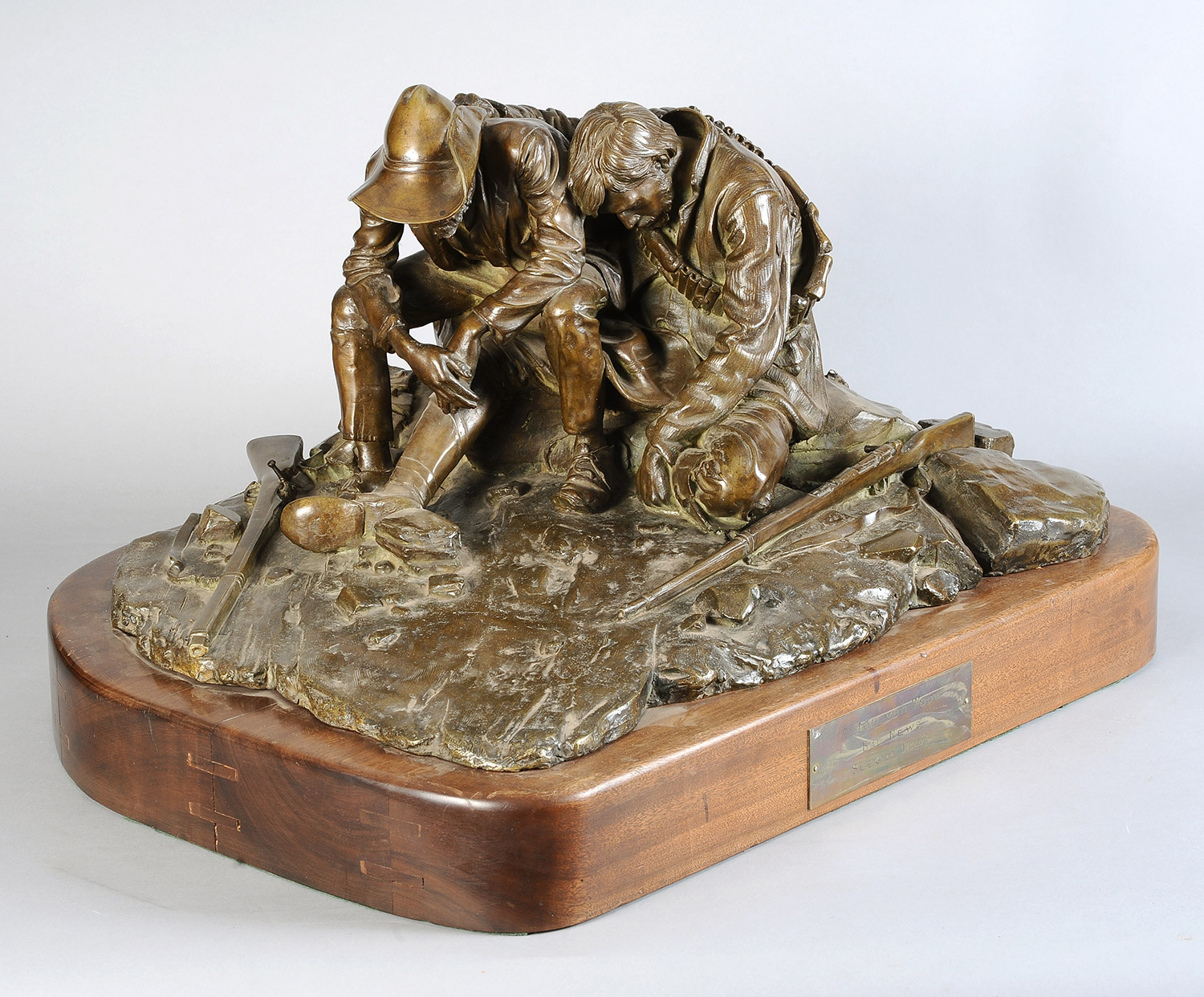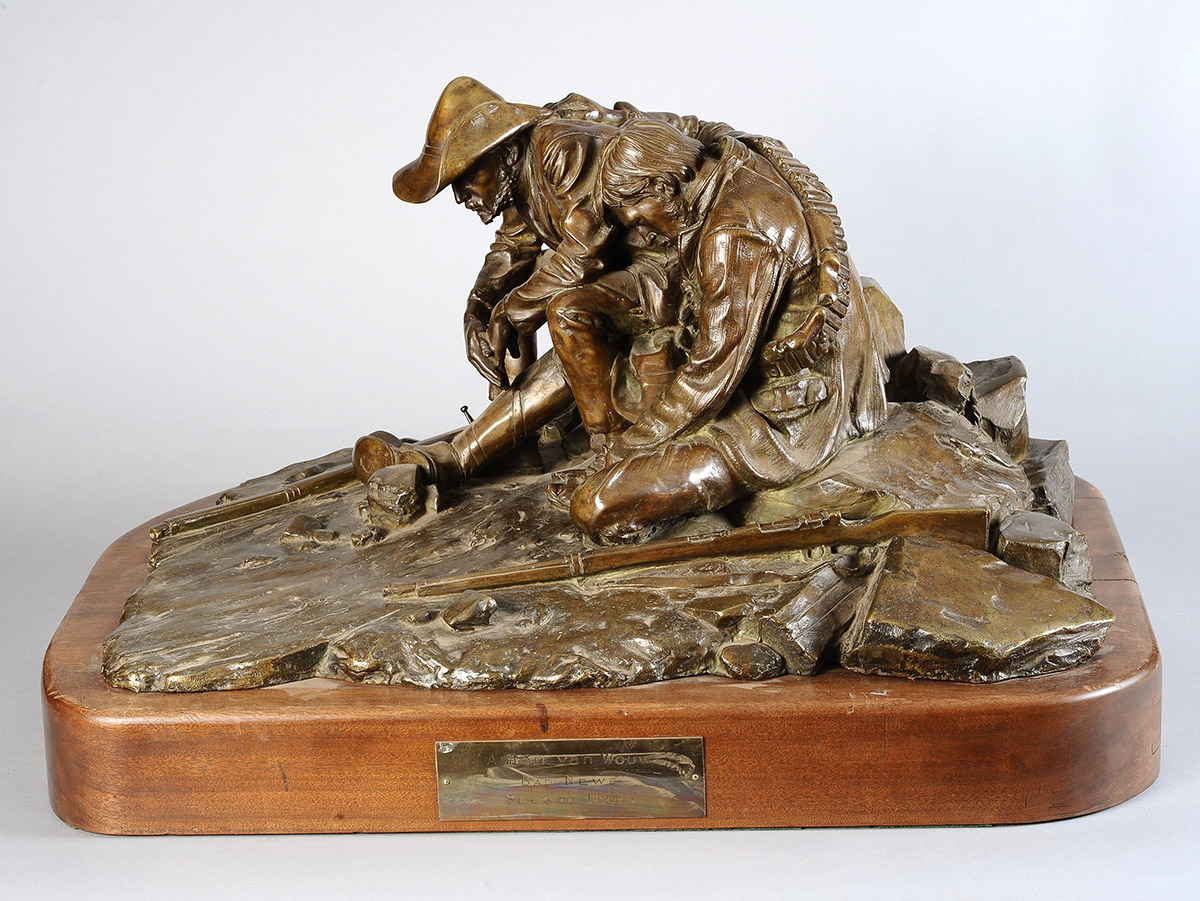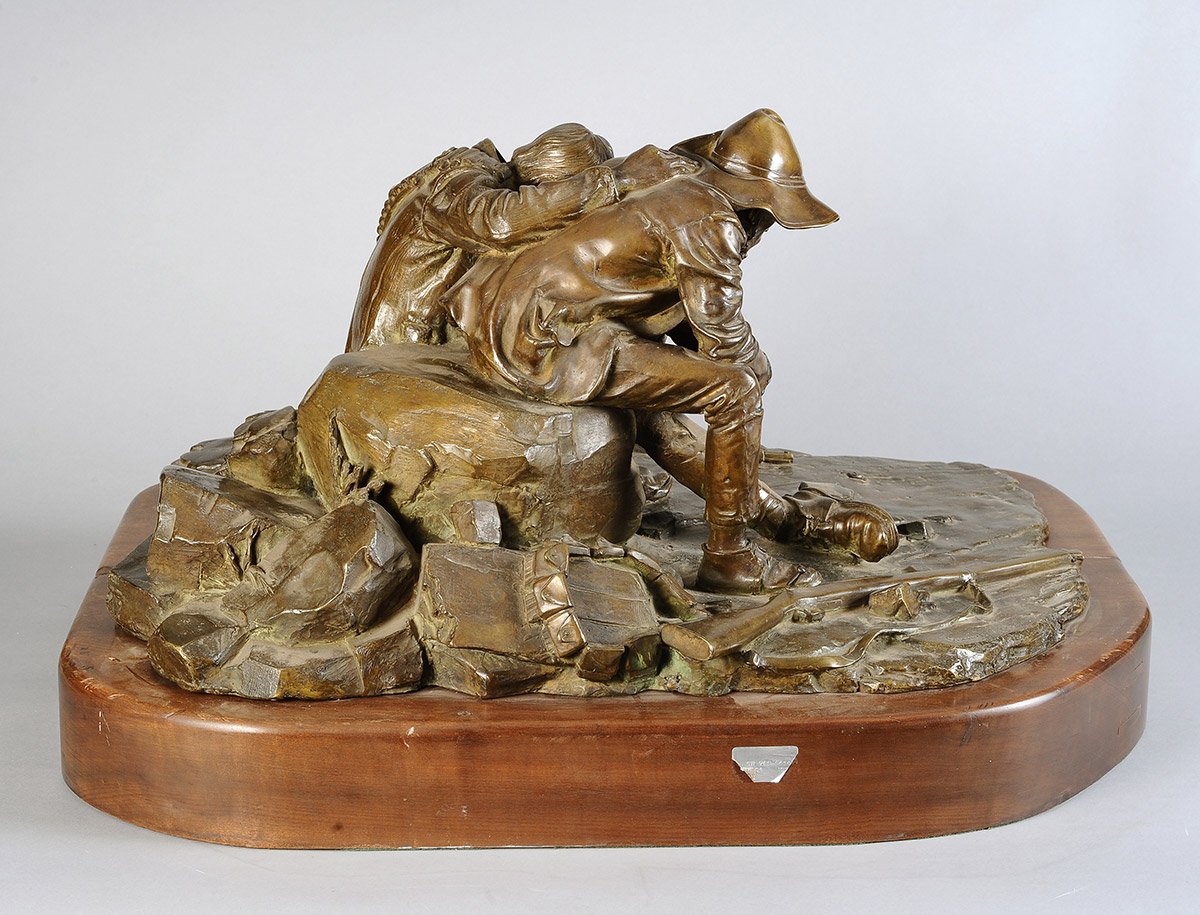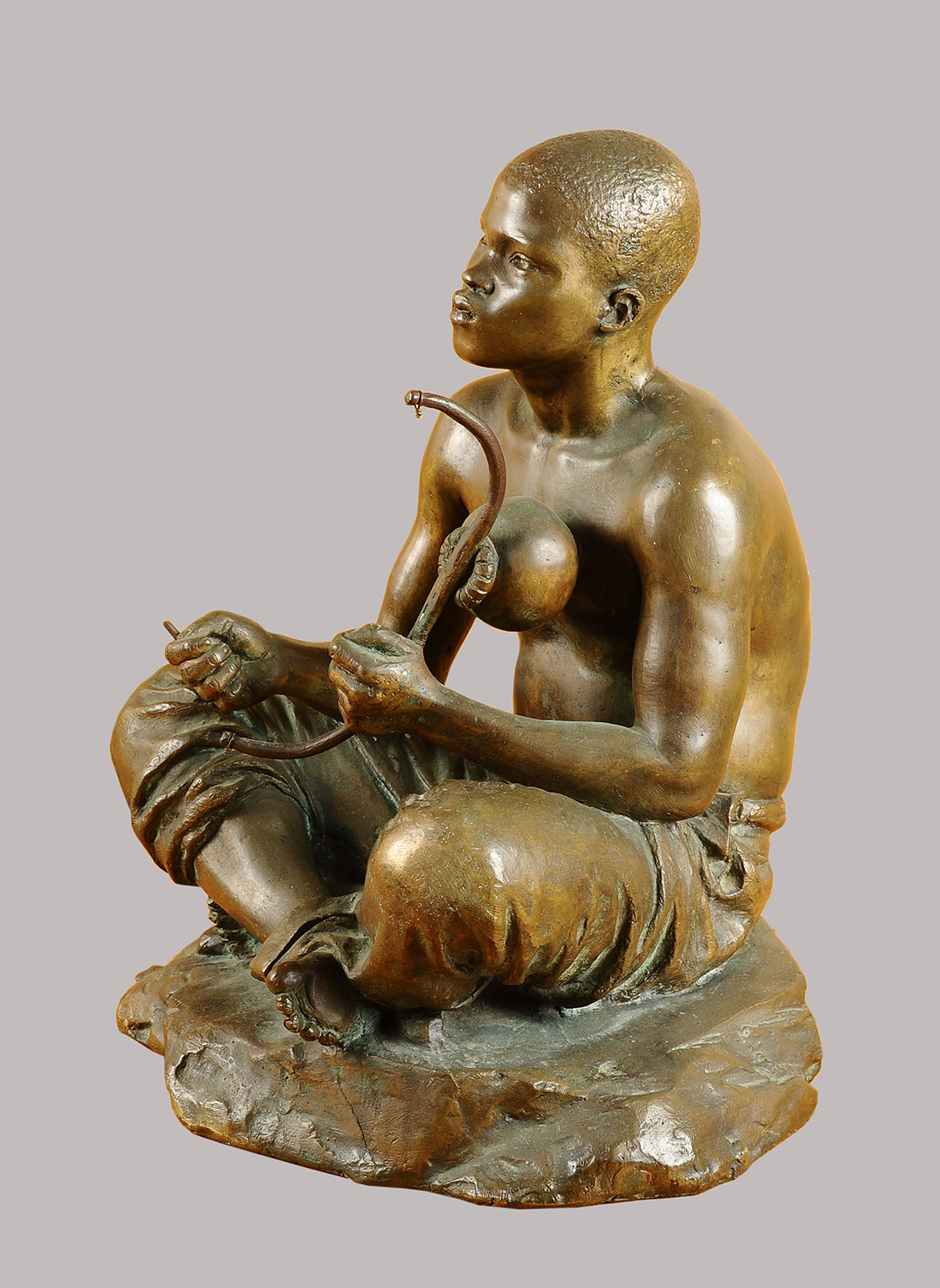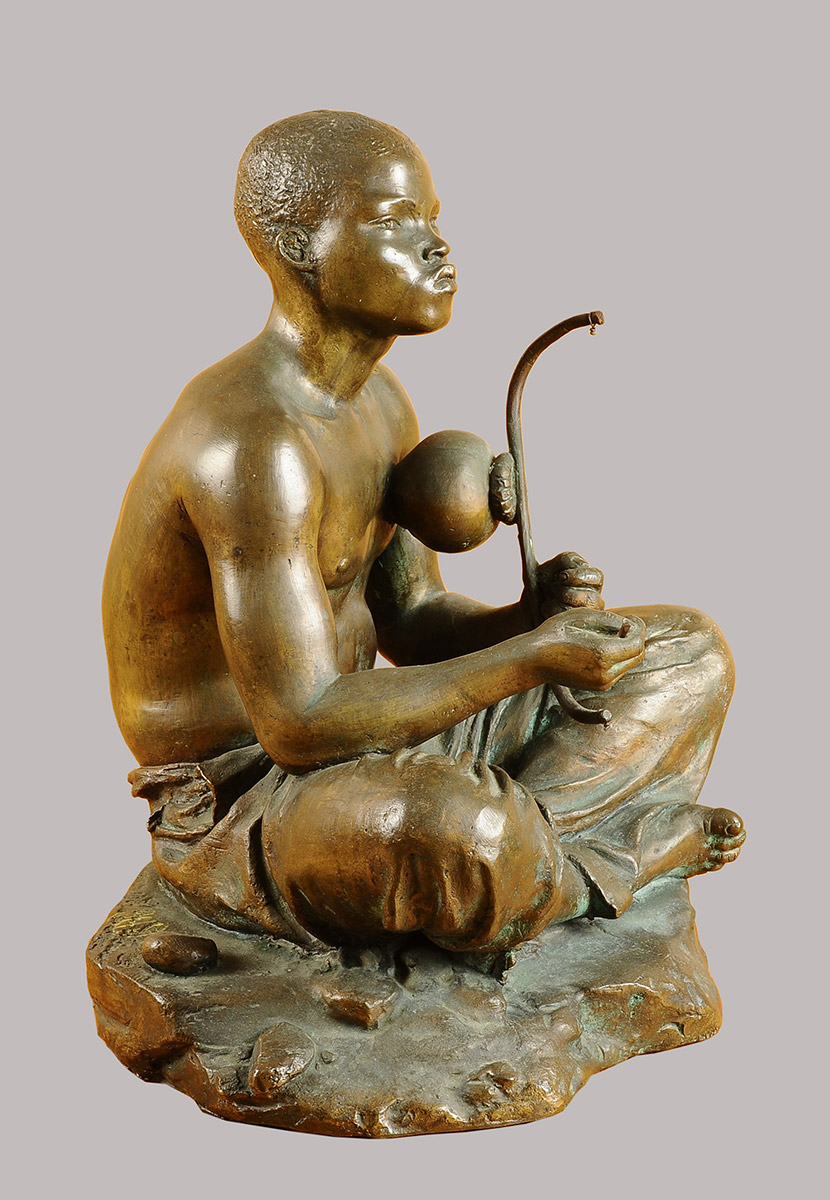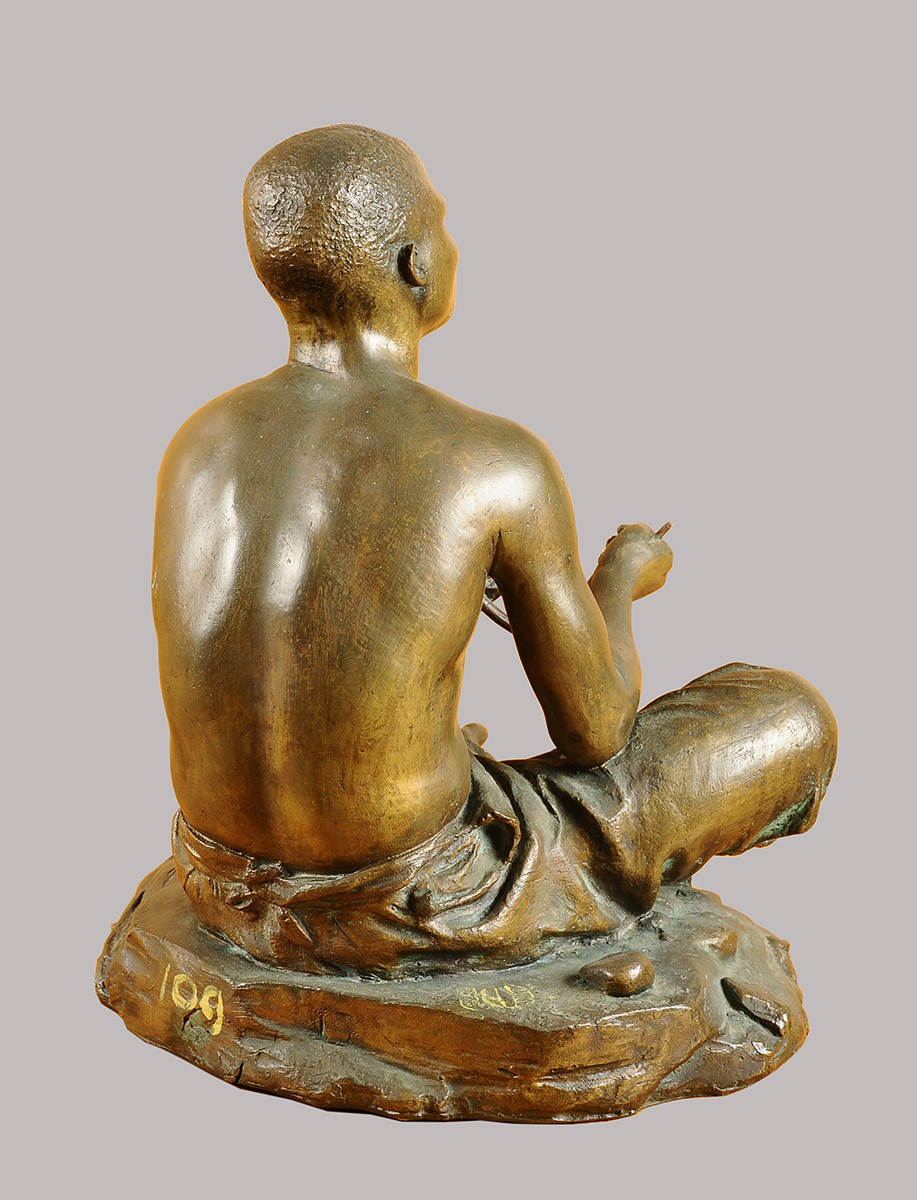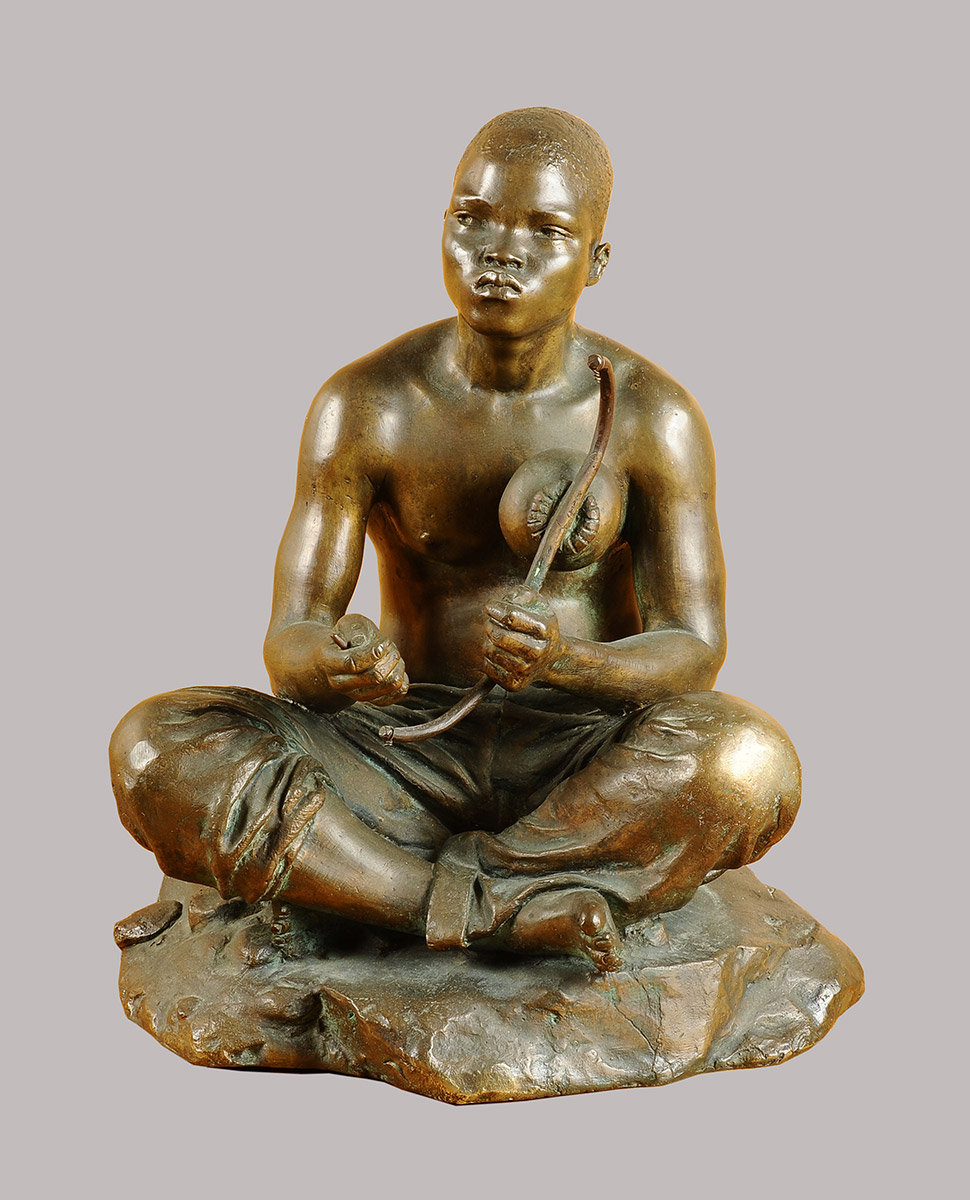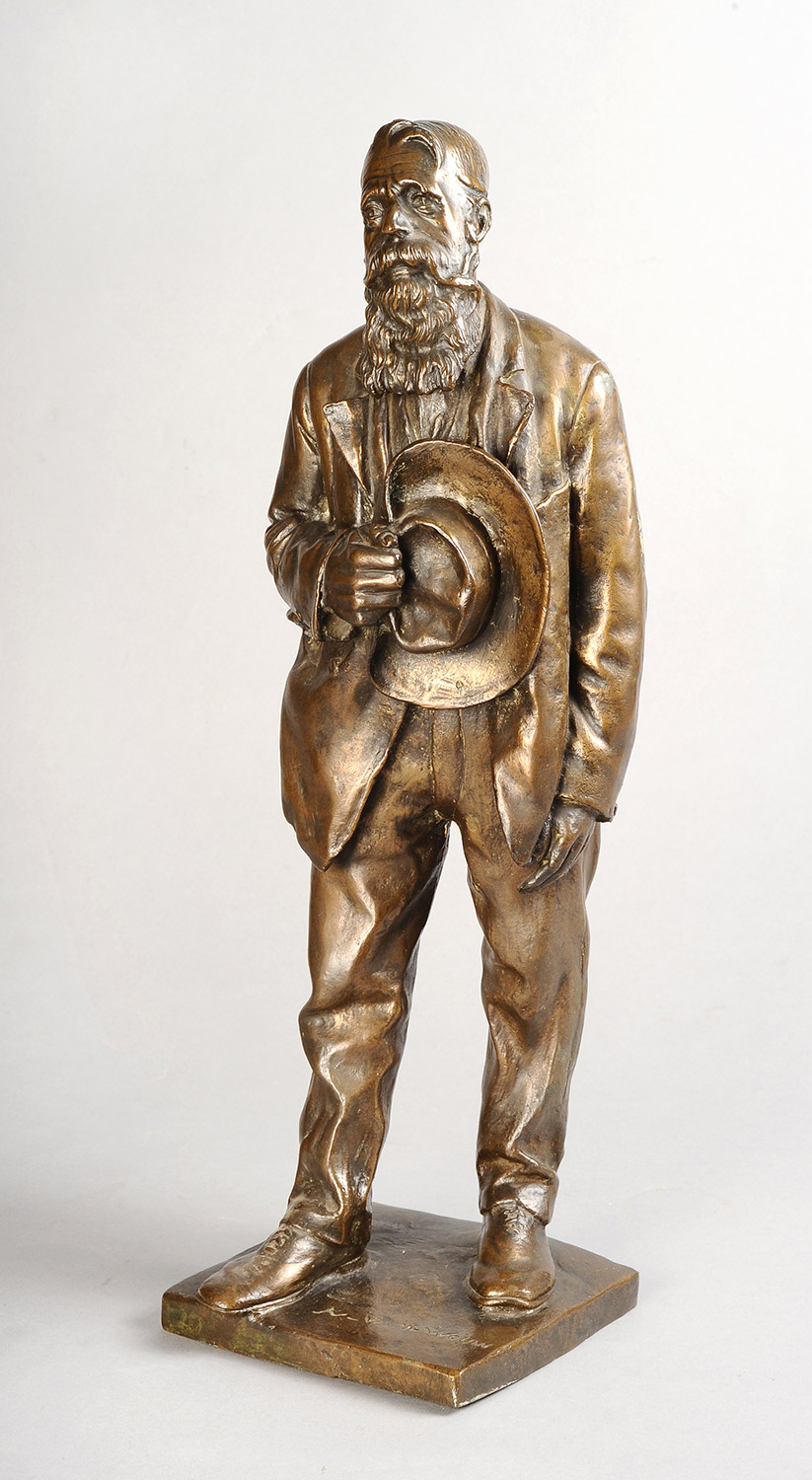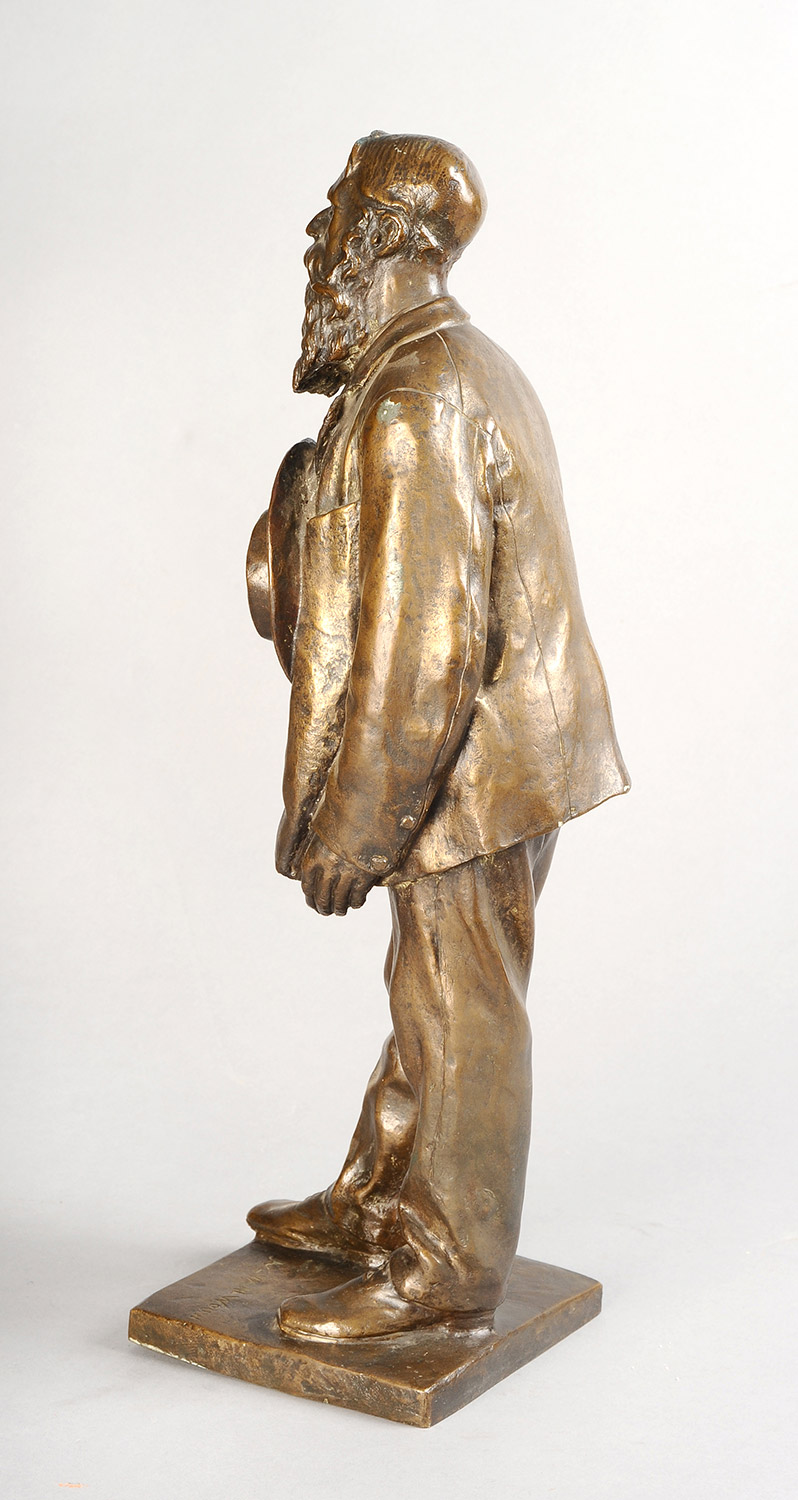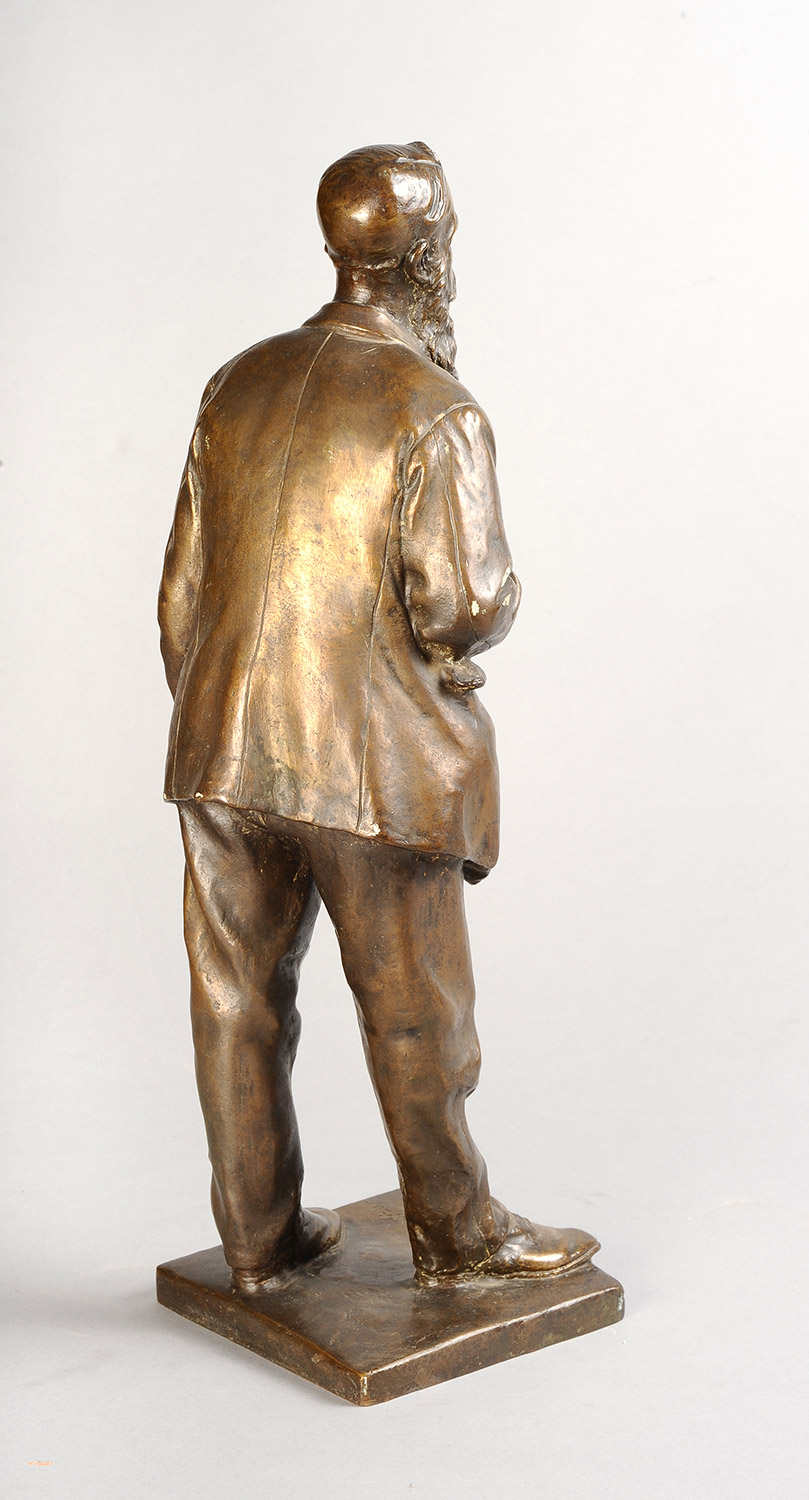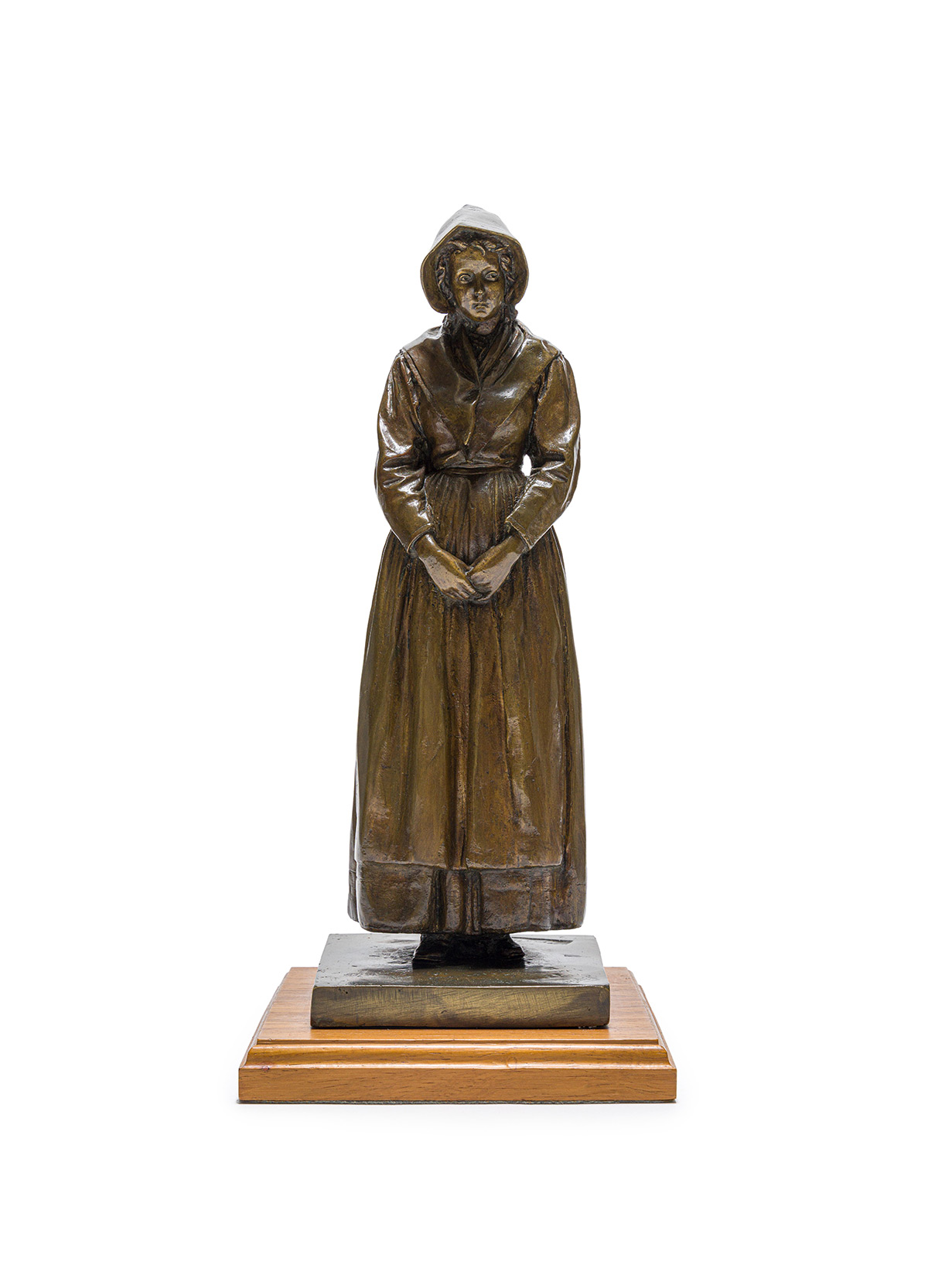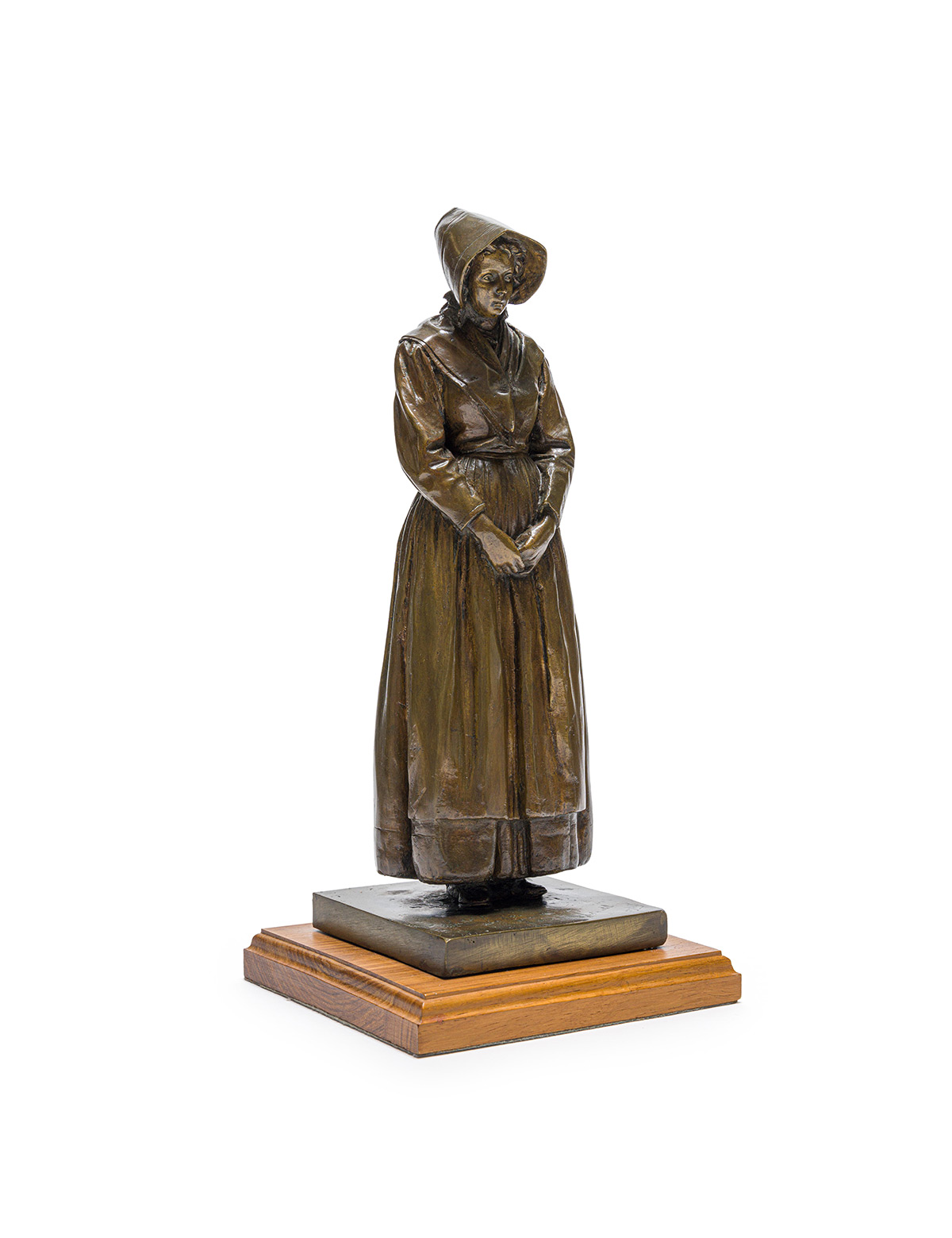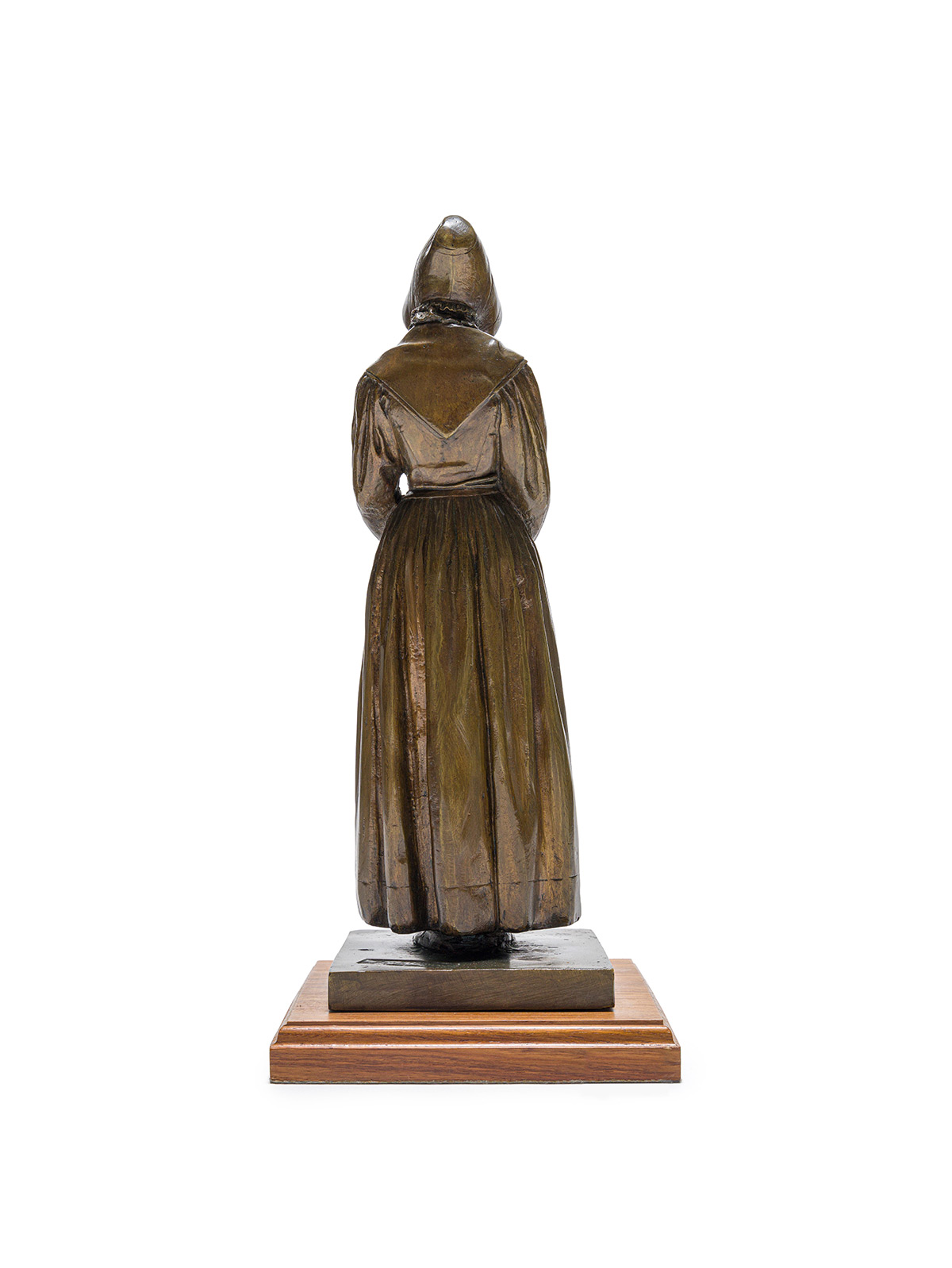Anton VAN WOUW (1862 – 1945)
BIOGRAPHY
Anton van Wouw was a Dutch-born South African sculptor.
Van Wouw moved to the developing city of Pretoria at the age of 28. It was ten years before he received his first commission from financier Sammy Marks to create a monumental statue of Paul Kruger, which stands on Church Square.
During the time spent in the wilderness, he developed a great admiration for the Boer nation, which influenced his artistic development. He identified with their struggles and hopes and this commitment was reflected in his work.
Although representational, his sculptures capture the rugged and emotional essence of his subjects. One of his most notable pieces of work is the figure of a woman used in the Women’s Monument near Bloemfontein. He collaborated on this with the architect Frans Soff. He was also responsible for a powerful bust of General Christiaan de Wet and a statue of Louis Botha in Durban.
Woman and Children (1938), a bronze statue honouring the role the Voortrekker women played in the Great Trek, was Van Wouw’s last commission. The sculpture is located at the base of the Voortrekker Monument in Pretoria, stands 4.1 meter tall and weight 2.5 tons. The casting was done by Renzo Vignali in Pretoria. Models for the statue were Cato Roorda or Isabel Snyman as the woman, Betty Wolk as the girl and Joseph Goldstein as the boy.
He also portrayed indigenous people and it is among these smaller sculptures that some of his finest work can be found. They are much less formal than his larger work and are appealing in their vivid and lifelike facial expressions. In Dust in the Glasshouse: The Atholl Collection of South African Art (2024), author Deon Viljoen argues that Van Wouw’s sculptures of Black South Africans – particularly of mine workers in early 20th-century Johannesburg – are worthy of reappraisal in the post-apartheid context.


